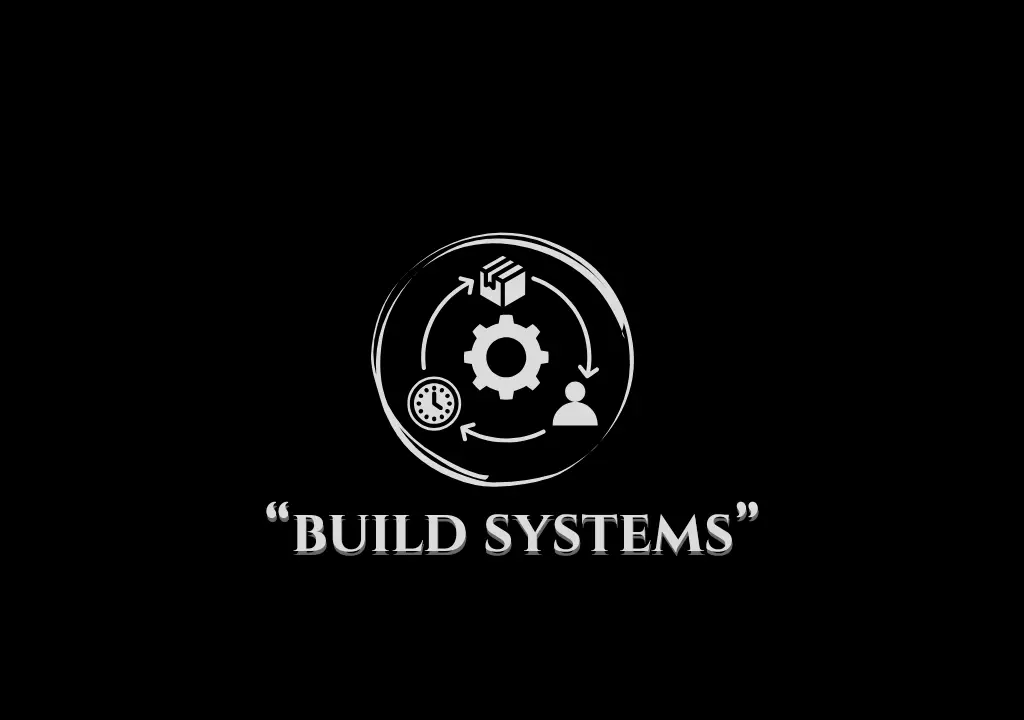Table of Contents
Motivation Is Overrated — Here’s What Actually Works
Let’s be honest.
You don’t have a motivation problem. You have a system problem.
You can watch every inspiring YouTube video, listen to every hype playlist, and read quote after quote that screams, “You’ve got this!” — but somehow, you still fall off track. One bad day, and everything unravels. Sound familiar?
That’s because motivation is a mood. It’s unreliable, inconsistent, and totally overrated. It shows up when it wants to — and vanishes the moment life gets messy.
But what if you didn’t need motivation to stay productive?
What if your progress didn’t depend on how you felt?
That’s where productivity systems come in.
A good productivity system doesn’t care whether you’re tired, unmotivated, or feeling “off.” It runs in the background — quietly, consistently — and keeps you moving forward even when you don’t feel like it. It’s the ultimate anti-chaos weapon for ambitious people who want real results.
And let’s face it: if you’re reading this, you’re not here for generic “get motivated!” advice.
You’re here to get organized, stay consistent, and actually move forward with your goals, habits, and side hustles.
So here’s the truth:
If you’re serious about personal growth and high performance, you need to forget motivation — and build a system instead.
Let’s dig in.
The Myth of Motivation

You’ve felt it before: that adrenaline rush after watching a productivity video or listening to a podcast about morning routines. You feel fired up — ready to take on the world. For a day or two, you do all the right things: wake up early, journal, drink water, check off tasks…
And then?
Life happens. A rough morning. A late night. A little self-doubt. Suddenly, that fire fizzles out.
Here’s why: motivation is a spark, not a system. And sparks don’t last.
Motivation Is Emotional, Not Structural
The problem with relying on motivation is that it’s tied to emotion — and emotions are unpredictable. One day, you feel like writing your blog or studying for your certification exam. The next? You’re scrolling Pinterest, telling yourself you’ll “start tomorrow.”
But productivity systems don’t care how you feel. They give structure to your ambition. They create rituals, habits, and workflows that make progress automatic — even on your worst days.
Let’s break it down.
Motivation is like caffeine.
It gives you a jolt. It feels good for a moment.
But what happens when the buzz wears off? You crash.
Productivity systems, on the other hand, are like sleep.
They’re reliable. Restorative. Sustainable.
They don’t hype you up — they support you long-term.
Why Motivation Fails You
Here’s what’s really going on behind the scenes:
- Motivation creates dopamine spikes. It gives your brain a reward for starting something new — but not for sticking with it.
- Your brain loves novelty. That’s why you love setting goals. But when the real work kicks in? Boredom. Resistance. Distraction.
- Without a system to guide you, you fall into a start-stop cycle that kills progress.
Sound familiar?
“I start strong but can’t stay consistent.”
“I get motivated, but I lose steam in a few days.”
“I have goals, but no structure to follow through.”
That’s not because you’re lazy — it’s because your productivity lacks a system.
A Real-Life Example
Take Jordan, a side hustler trying to grow a YouTube channel while working a full-time job.
For months, he relied on bursts of motivation to film content. Some weeks, he’d record three videos. Other weeks, nothing.
He felt scattered and stressed. Until he built a productivity system.
He created a Notion dashboard with a content calendar, daily writing block, and templates for scripting. No more guesswork. No more waiting to “feel ready.” He just followed the system — and the results followed him.
That’s the power of structure.
What Is a System, Really?
If motivation is a fleeting feeling, a system is your personal GPS — guiding you step-by-step, no matter the weather.
So let’s strip away the buzzwords. What exactly is a productivity system?
A Productivity System = Process + Tools + Consistency
At its core, a productivity system is a repeatable structure that helps you take action — even when you’re tired, unmotivated, or distracted.
It’s not about perfection. It’s about creating a setup so solid that progress becomes inevitable.
A solid productivity system typically includes:
- Habits: Small, repeatable actions that move you forward
- Triggers: Signals that cue your routines (like opening Notion in the morning)
- Tools: Templates, dashboards, calendars, checklists
- Feedback Loops: Weekly reviews or tracking systems to adjust as you go
Think of it as automation for your goals — whether that’s writing content, managing a side hustle, tracking habits, or budgeting your money.
Let’s Make This Real: The Notion Dashboard Example
Imagine waking up, opening your laptop, and seeing a clean Notion dashboard that shows:
- Today’s 3 key tasks
- Your top habits (hydration, reading, content creation)
- A journal prompt to reset your mindset
- A shortcut to your finance tracker and weekly goals
That’s not just “planning.”
That’s a productivity system in action.
It’s the difference between “What should I do today?” and “Here’s what I do next.”
This structure is what turns your scattered energy into focused momentum.
You’re not reacting — you’re executing. Calmly. Clearly. Consistently.
The 1% Rule: How Small Systems Create Big Results
Let’s borrow a principle from James Clear:
“You don’t rise to the level of your goals. You fall to the level of your systems.”
Here’s the kicker: you don’t need to overhaul your life overnight.
You just need to start building systems that make success easier over time.
One percent better each day might sound small, but in a year? That’s massive growth.
And with the right productivity system, that 1% stacks without burning you out.
Ask Yourself:
- “What part of my life feels chaotic right now?”
- “Where do I waste the most mental energy?”
- “What if I had a system that solved that for me?”
That’s where your first productivity system should start.
Why Systems Work Better Than Motivation
Let’s be honest: motivation is like caffeine. It gives you a jolt, makes you feel invincible for a bit… then crashes hard. Systems? They’re more like sleep — quiet, consistent, and absolutely essential.
When life gets busy, chaotic, or emotionally draining (which it often does), motivation runs and hides. But a solid productivity system? That’s the thing that keeps you moving, even when you don’t “feel like it.”
1. Systems Reduce Decision Fatigue
You wake up and ask:
“What should I do today?”
Wrong question.
A well-built productivity system already knows.
Your dashboard says: write for 1 hour, publish on Pinterest, check finances, done.
This removes choice overload — one of the biggest hidden productivity killers.
System = fewer decisions + more energy for what matters.
2. Systems Make Progress Inevitable
Goals are exciting. But they’re just destinations.
Systems are the vehicle that get you there.
Say your goal is to launch a side hustle. Cool.
Your productivity system might look like:
- Batch-create content every Saturday (with pre-set templates)
- Use a weekly review to measure growth
- Set 3 micro-goals each week tied to your big-picture outcome
You don’t have to rely on hype — you just follow your flow.
Brick by brick, your system builds momentum — no matter your mood.
3. Systems Are Built for Real Life
Here’s the truth most “grind culture” ignores:
You won’t be productive every day. Life happens.
You’ll have off days. Low-energy days. Overwhelm.
But if your productivity system has:
- Buffer time
- Low-effort fallback tasks
- Built-in tracking to reset quickly
Then even your “bad” days aren’t wasted.
You’re still moving forward — just at a different pace.
That’s what makes systems sustainable: they bend, but they don’t break.
Real-Life Story: The Side Hustler With a System
Meet Ava — a 26-year-old designer building a digital product brand while working 9–5.
She used to wait for motivation. Sometimes she’d get a burst of energy and make progress. Other times? Total burnout.
But once she built a system — batching tasks on Sunday, using a Notion tracker for daily wins, scheduling “no-brain work” on low-energy days — things changed.
Now she shows up consistently without forcing it.
Why? Because the system does the heavy lifting.
Visual Cue:
Imagine a split screen:
| Motivation-Based | System-Based |
|---|---|
| Feels good at first | Feels boring but builds momentum |
| Depends on energy | Runs regardless of energy |
| Fades fast | Scales slowly, lasts longer |
| Emotion-driven | Structure-driven |
Which one are you building your life around?
How to Build a Simple, Effective System
If productivity systems were rocket science, no one would be consistent.
But the truth? Simple systems outperform complex plans every time.
Let’s build your first one — step-by-step, real-life tested, and built for you.
1. Pick Your Chaos
Start by asking:
“What area of my life feels the most scattered?”
- Is it your daily habits?
- Your side hustle progress?
- Your finances?
- Your time use?
Productivity systems start with pain points.
The more chaotic the area, the more powerful the impact of organizing it.
2. Define the Essential Elements
Every solid productivity system has 4 key parts:
1. Input – Where the chaos enters (ideas, tasks, goals)
2. Process – How you organize & act on it (daily flow, weekly routines)
3. Output – The results you want (consistency, content, income, clarity)
4. Feedback – How you review and improve (tracking & reflection)
Let’s say you’re building a system to write content consistently:
- Input: Brain dump topic ideas weekly.
- Process: Use a Notion template to outline/write.
- Output: Publish 2x per week.
- Feedback: Weekly review of top-performing posts.
That’s a mini productivity system — rinse and repeat.
3. Use the Right Tools (But Keep It Minimal)
You don’t need 10 apps.
You need 1 or 2 tools you actually use.
🔧 For most ambitious people, Notion is gold. Why? Because you can build a productivity system that includes:
- Daily task tracker
- Habit logs
- Goal breakdowns
- Side hustle planner
- Weekly review board
- Finances + content calendar — all in one place
If you’re starting out, grab a clean, minimal Notion template like PARA Method for free.
This lets you plug into structure fast — no decision fatigue.
4. Make It Visual and Trackable
If your system lives in your head, it’s not a system.
Use visual cues:
- Progress bars
- Weekly scorecards
- Color-coded tags (Focus / Deep Work / Admin)
- Daily dashboard with goals front and center
Why visuals matter: We’re wired to respond to feedback loops. When you see momentum, you want to keep going.
5. Start Small. Then Optimize.
Don’t build a mega-system overnight.
Build a tiny version that works — then improve it.
Example:
- Week 1: Track just 1 habit
- Week 2: Add a daily task board
- Week 3: Create your weekly planning ritual
Systems evolve. The magic is in iteration.
Staying Consistent with Systems (Even When Life Happens)
Let’s be real: Life isn’t a perfectly scripted productivity vlog.
There are off days, curveballs, burnout cycles — and yet, this is exactly where productivity systems shine.
Because good systems don’t require you to be at 100%.
They’re built to carry you on the 60% days, the messy Mondays, and the “I can’t focus” kind of weeks.
1. Design for Real Life, Not Your Ideal Self
Most people fail with productivity because they design for their best-case scenario.
They think: “I’ll get up at 5, crush deep work, journal, gym, and meditate — every day.”
Spoiler: You won’t.
Build your productivity system around how you actually live, not how you wish you lived.
Examples:
- Add buffer days for when you fall behind
- Use flexible time blocks, not rigid hour-by-hour schedules
- Have a “bare minimum mode” version of your day
2. Build Feedback Loops
A system that doesn’t adapt is just a plan.
The best productivity systems have feedback baked in. Ask:
- “What worked this week?”
- “What felt heavy or useless?”
- “What would I improve next time?”
A simple weekly review in Notion or a journal keeps your system evolving with you — not against you.
3. Embrace Imperfection (But Show Up Anyway)
Consistency doesn’t mean perfection.
It means showing up more often than not.
Use these tricks to keep going even when motivation crashes:
- Environment cues: Phone in another room = more focus
- Habit stacking: Attach new habits to existing routines
- Templates & checklists: Reduce thinking, increase doing
When your system removes decisions, you remove resistance.
4. Expect the Dips
Burnout isn’t always about doing too much — it’s about unclear priorities and inconsistent recovery.
Your system should include:
- Breaks that are planned (not guilt-driven)
- Systems for downtime and play
- Review rituals that reconnect you with why you’re doing this
Remember: Even the most productive creators build in recharge cycles.
Conclusion: Systems Are the Real Superpower
Motivation is exciting, but it’s a short-lived spark.
Productivity systems are the steady engine that keeps you moving forward — even when life feels heavy, your energy dips, or inspiration goes missing.
If you’re someone who’s tired of starting over…
If your digital life feels chaotic and your habits feel hard to hold onto…
It’s not that you’re lazy or unmotivated — it’s that you don’t have the right system yet.
Recap the Truth:
- Motivation fades.
- Life happens.
- Systems stay.
They reduce friction, automate decisions, and help you build consistency without needing daily willpower.
Start small.
Pick one area of your life — your morning, your tasks, your finances — and build a simple system around it.
And if you’re ready to stop juggling chaos and start running your life like a pro?
Download our free Notion Starter System — the same framework we use for focus, habits, tasks, and side hustle clarity.
It’s minimal, clean, and designed to help you take action today.
“Imagine where you’d be six months from now if your system ran your life — not your feelings.”
That’s not just productivity — that’s power.




8,185 Responses
электрокарнизы для штор купить в москве [url=https://avtomaticheskie-karnizy.carrd.co/]электрокарнизы для штор купить в москве[/url] .
You really make it appear so easy along with your presentation but I in finding this topic to
be really one thing that I think I’d by no means understand.
It kind of feels too complex and very wide for me.
I’m looking forward to your next post, I’ll attempt to get
the cling of it!
Hello! I just wanted to ask if you ever have any problems with hackers?
My last blog (wordpress) was hacked and I ended up losing months of hard work
due to no backup. Do you have any methods to
prevent hackers?
В «Сибирском Докторе» работают врачи с многолетним стажем и профильным образованием:
Подробнее тут – [url=https://kachestvo-vyvod-iz-zapoya.ru/]вывод из запоя в новосибирске[/url]
В этот этап включено:
Углубиться в тему – [url=https://kachestvo-vyvod-iz-zapoya.ru/]вывод из запоя капельница новосибирск[/url]
Кроме стандартного вывода из запоя и детоксикации, врач клиники «Реабилитация Плюс» может предложить дополнительные процедуры, направленные на полноценное восстановление пациента:
Подробнее – [url=https://narcolog-na-dom-sochi00.ru/]vyzvat-narkologa-na-dom sochi[/url]
Hi, Neat post. There is a problem with your website in internet explorer, might check this?
IE nonetheless is the market leader and a good component of other
folks will miss your great writing because of this problem.
онлайн оценка дорогих часов [url=https://ocenka-chasov-onlajn3.ru/]https://ocenka-chasov-onlajn3.ru/[/url] .
трансформатор силовой 30713150 купить [url=https://silovye-transformatory-kupit3.ru]https://silovye-transformatory-kupit3.ru[/url] .
I do not even understand how I ended up right here, however I believed this
put up was once great. I don’t understand who you’re but certainly
you are going to a famous blogger when you are not already.
Cheers!
Алкогольный запой — это острое состояние тяжёлой интоксикации, при котором организм накапливает критические уровни продуктов распада этанола и перестаёт справляться с их нейтрализацией. При этом страдают важнейшие органы и системы: печень, почки, сердце, центральная нервная система. Без квалифицированной медицинской помощи риск развития судорог, алкогольного делирия и полиорганной недостаточности возрастает многократно.
Изучить вопрос глубже – http://
виды силовых трансформаторов [url=https://silovye-transformatory-kupit2.ru]https://silovye-transformatory-kupit2.ru[/url] .
I’ve struggled with nail fungus for years and nothing topical has worked long-term.
The idea that Appanail supports immune health and targets the root cause is super promising.
Appreciate the honest review!
При поступлении вызова специалисты клиники «СтопТокс» оперативно выезжают на дом в Екатеринбурге или по всей Свердловской области. По прибытии врач проводит всестороннюю диагностику, включая измерение артериального давления, пульса и уровня кислорода в крови, а также собирает анамнез и оценивает степень интоксикации. На основе полученной информации составляется индивидуальный план лечения, который включает следующие этапы:
Выяснить больше – [url=https://narcolog-na-dom-ekaterinburg000.ru/]нарколог на дом цена в екатеринбурге[/url]
Just desire to say your article is as amazing.
The clearness to your publish is just cool and that i could suppose you are an expert on this subject.
Well together with your permission allow me to grasp your RSS feed to keep
updated with impending post. Thank you a million and please continue
the enjoyable work.